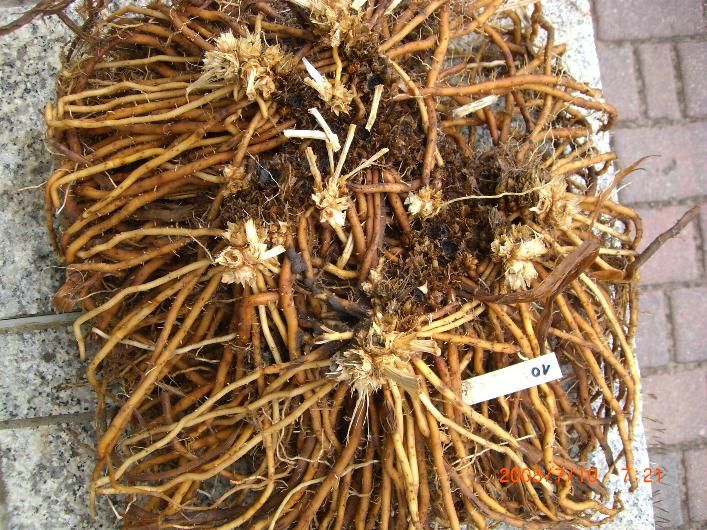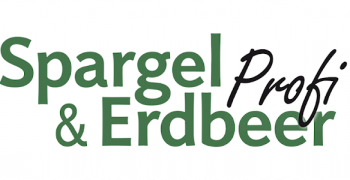Bud and spear development of asparagus under constant temperature
Yield of asparagus is the result of a complex sequence of physiological processes, which are influenced by environment and management in current and previous years. Meanwhile the knowledge of yield physiology has much improved. It is known that the total amount of asparagus yield is related to carbohydrate supply in storage roots. Also the number of buds can limit the total number of high quality spears. The apical dominance of a growing asparagus spear within one bud cluster is repeatedly described, but is rarely quantitatively proven. Therefore, our objectivity was to quantify the effects of apical dominance and bud cluster activity on asparagus yield pattern and to provide new experimental data for modeling of the asparagus crop.
Experimental container trial
In April 2004, ten 40 L containers were filled with loamy sand taken from the top layer of an asparagus field at the research station in Großbeeren. A single, one year old asparagus plantlet was planted in each container. There were five containers planted with the cultivar ‘Gijnlim’ and five with ‘Backlim’. The containers were set up in the field. Water and nutrients were supplied by drip irrigation. On April 1st, 2008 the soil on top of the asparagus crowns was carefully removed. The containers were set up in a growth chamber at 20 °C from April 7th, 2008 until July 4th, 2008. During this time spear length was measured daily except weekends and spears were cut close to the crown when longer than 25 cm. Each spear was assigned to a bud cluster, where a bud cluster was defined as a dense group of buds, clearly distant from other groups of buds on the crown. During the time in the growth chamber the containers were watered once a week but not fertilized. The light in the growth chamber was on only during the measurements.
Apical dominance of a growing spear 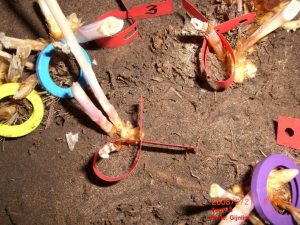
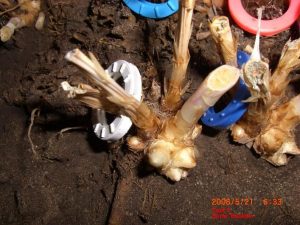
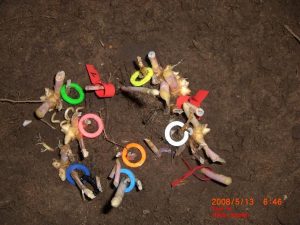
It has been stated by Tiedjens already in the year 1926 that the pattern of bud break is controlled by apical dominance within each bud cluster on the crown, i.e. growing spears produce inhibitory effects, which extends only to the buds of the same bud cluster.
There were many bud clusters in our experiment, which had only one growing spear at the same time because new spears started to grow only after the previous spear was harvested. This pattern confirms the message that a growing spear inhibits the development of the next bud. However, there were also bud clusters with up to four spears growing simultaneously. Hence, the appearance patterns of spears were quite diverse. Based on the frequency distributions observed in our study we suggest to consider the effect of apical dominance within asparagus bud clusters as a stochastic process, in which the probability for a spear to start growing decreases with the number of spears already present at the same bud cluster. After a spear was harvested from a bud cluster, which had no other growing spears it took some time before a new spear started to grow.
Number of buds and spears
The active time of bud clusters was defined as number of days between begins of growth of the first and of the last spear at one cluster. The average number of active bud clusters was about five clusters per plant in both cultivars at begin of the experiment. Thereafter, the time course of active bud clusters showed marked differences between cultivars as cultivar Backlim developed fewer active bud clusters and stopped earlier to produce spears. The average spear appearance rates per plant showed characteristic patterns. Initially several – but not all – plants had a high spear appearance rate, which was caused by simultaneously growing spears at those bud clusters that were active from the begin of the experiment. Thereafter followed a period with an almost constant rate, which resulted in a linear increase of spears.
After a spear was harvested from a bud cluster which had no other growing spears it took some time before a new spear started to grow. On each day when a new spear started to grow we counted the number of previous days without growing spears at the same bud cluster. This number of days is called LAG. LAG equal to zero refers to spears that started growing when other spears were still present on the same bud cluster. At the end of the experiment, the average LAG for ‘Gijnlim’ and ‘Backlim’ was 5 and 3 days respectively. However, at the beginning of the experiment there was no LAG because two or more spears were growing simultaneously on all active bud clusters.
The number of harvested spears was significantly different between cultivars in our study. It is known, that the number of buds is genetically controlled. The main period of bud formation is during fern growth following harvest and only few buds are formed during harvesting. But even if new buds were formed, they may not be viable and hence do not contribute to spear yield of the current harvest. We observed that only a few new buds were formed during our experiments. Therefore, the plants run out of buds during the unusually long harvest period. The cultivar recommendations for plant distance in the row are an indicator of the number of bud clusters. For example, a larger plant distance in the row is suggested for ‘Gijnlim’ than for’ Backlim’. A genetically determined lower number of bud clusters mostly leads to thicker stems.
Carbohydrates in storage roots and spears
Our hypothesis that decreasing growth rates in time were caused by decreasing carbohydrate supply was not confirmed in this study. At the end of the experiment plants showed a broad range of carbohydrates in storage roots. However, there was no significant correlation with spear growth rate.







